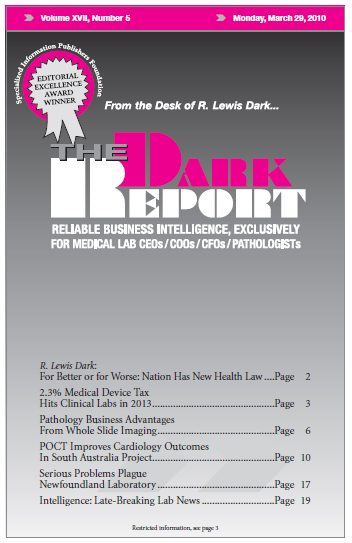CEO SUMMARY: Whole slide imaging (WSI) is a niche product today, but it offers the potential to redefine the practice of pathology. That’s the opinion of pathologists presenting at a digital pathology workshop last month. One pathologist explained how WSI significantly improves collaboration between pathologists and referring physicians. Another pathologist explained how regulators soon may …
Business Advantages From Whole Slide Imaging Read More »
To access this post, you must purchase The Dark Report.


